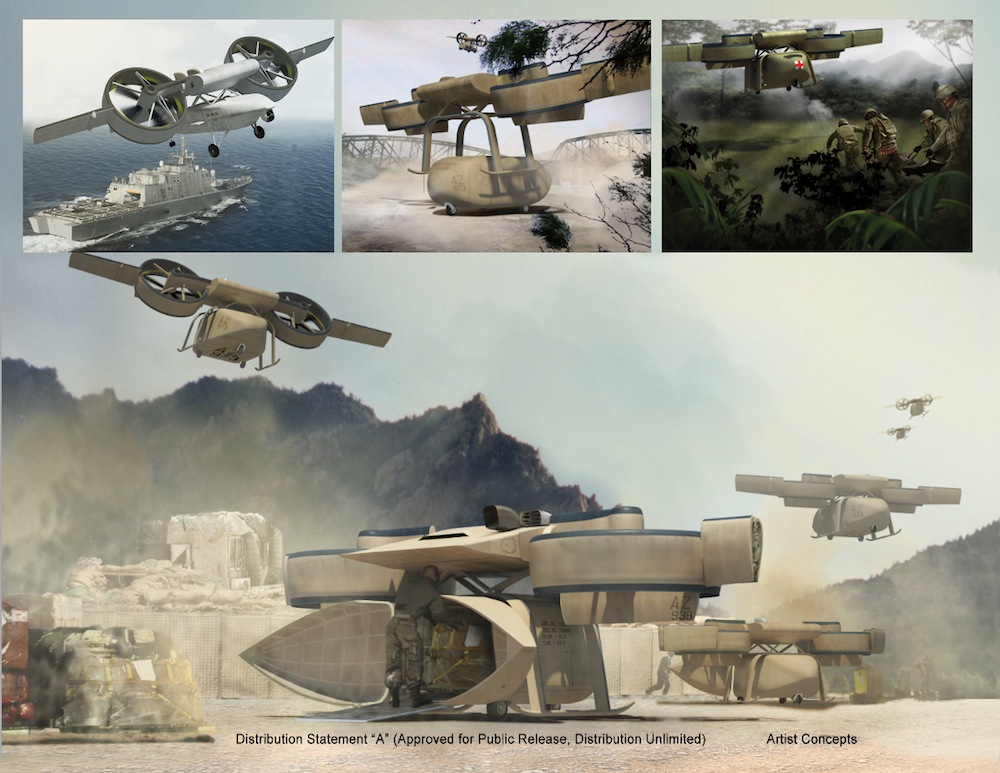Smartphone-Piloted Drones Could Support US Troops on Front Lines

Injured soldiers in dangerous or difficult-to-reach combat zones could one day be carried to safety aboard specially designed, smartphone-piloted drones.
The U.S. Defense Advanced Research Projects Agency, or DARPA, is developing a military drone capable of assisting troops while avoiding hostile threats on the ground, such as ambushes and improvised explosive devices or IEDs. The so-called Aerial Reconfigurable Embedded System (ARES) drones could transport cargo to and from the front lines of battle, deliver or pick up troops from out-of-the-way areas, or extract casualties, as well as conduct intelligence-gathering, surveillance and reconnaissance.
The program aims to provide troops with more practical and accessible alternatives to helicopters, which remain in limited supply in the military, said DARPA program manager Ashish Bagai. [9 Totally Cool Uses for Drones]
"Our goal is to provide flexible, terrain-independent transportation that avoids ground-based threats, in turn supporting expedited, cost-effective operations and improving the likelihood of mission success," Bagai said in a statement.
Rugged terrain and the threat of attack from enemy combatants make it difficult for trucks and other ground-based vehicles to reach the front lines of battle, according to DARPA officials. Yet, combat outposts typically require an average of 100,000 pounds (45,300 kilograms) of supplies each week, they added. Furthermore, some troops are stationed at high elevations or in areas with restricted road access.
The ARES drones will be designed to take off and land vertically. The unmanned system will be able to haul up to 3,000 pounds (1,360 kg) of supplies.
Two tilting fans that flank the main flight module will enable the vehicle to hover and land efficiently, even in tight spaces such as on the decks of ships. In fact, the cargo drones will be able to land in spaces half the size typically needed by similarly sized helicopters, according to DARPA. The drones will have their own power systems, fuel and digital flight controls, but pilots will also be able to control the vehicles remotely using a smartphone or tablet, they added.
Get the world’s most fascinating discoveries delivered straight to your inbox.
DARPA began experimenting with these types of vehicles in 2009 with the agency's Transformer program, which sought to develop a militarized, flying armored car. In 2013, DARPA decided to focus on the ARES design concept, according to agency officials.
Skunk Works, Lockheed Martin Corp.'s California-based advanced research program, is leading the design process for the ARES program. Skunk Works previously worked on the SR-71 Blackbird supersonic spy plane and the famed Cold War-era U-2 spy plane.
Follow Denise Chow on Twitter @denisechow. Follow Live Science @livescience, Facebook & Google+. Original article on Live Science.

Denise Chow was the assistant managing editor at Live Science before moving to NBC News as a science reporter, where she focuses on general science and climate change. Before joining the Live Science team in 2013, she spent two years as a staff writer for Space.com, writing about rocket launches and covering NASA's final three space shuttle missions. A Canadian transplant, Denise has a bachelor's degree from the University of Toronto, and a master's degree in journalism from New York University.


